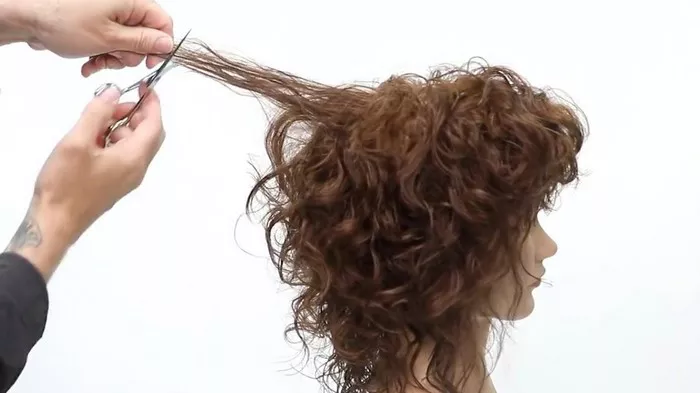Perming, a chemical hair treatment that alters the structure of the hair to create curls or waves, has been a popular styling technique for decades. While perms can produce stunning results, they also come with potential risks and drawbacks that can affect the health and integrity of your hair. In this article, we’ll delve into the harm that a perm can inflict on your hair, highlighting the potential risks and considerations associated with this chemical treatment.
Understanding the Perm Process
Before exploring the potential harm of perms, it’s essential to understand how the process works:
Chemical Solution: Perming involves the application of a chemical solution, typically containing ammonium thioglycolate or similar ingredients, to break the bonds within the hair shaft.
Restructuring: Once the bonds are broken, the hair is wrapped around perm rods or rollers in the desired pattern. The chemical solution is then applied again to restructure the hair into its new shape.
Neutralization: After the hair has been reshaped, a neutralizing solution is applied to reform the broken bonds and lock in the new curl or wave pattern.
Setting: Finally, the hair is rinsed and styled to set the curls or waves, resulting in a permanent change to the hair’s texture.
Potential Harm of Perms
While perms can produce beautiful, long-lasting curls, they also come with potential risks and harm to your hair:
Damage to Hair Structure: The chemical process of perming can weaken the hair shaft and alter its structure, making it more susceptible to damage and breakage. Over time, repeated perming treatments can lead to significant damage and loss of hair elasticity.
Dryness and Brittle Hair: Perms can strip the hair of its natural oils, leaving it dry, brittle, and prone to breakage. The chemicals used in perming can disrupt the hair’s moisture balance, leading to parched and damaged strands.
Scalp Irritation: Some individuals may experience scalp irritation or allergic reactions to the chemicals used in perming solutions. This can manifest as redness, itching, or burning sensations on the scalp, necessitating the use of protective measures or discontinuation of the treatment.
Hair Thinning and Loss: Excessive perming or improper application of perm solutions can lead to hair thinning and loss, particularly if the hair becomes overly damaged or weakened. The stress placed on the hair follicles during the perming process can contribute to hair breakage and shedding.
Color Fading: Perming treatments can cause hair color to fade more quickly, especially if the hair has been previously dyed or chemically treated. The chemicals used in perming can strip away color molecules from the hair shaft, resulting in a dull or washed-out appearance.
Uneven Results: Improper application of perm solutions or uneven winding of the hair around perm rods can result in uneven curl patterns or “fishhook” ends, detracting from the desired look and requiring corrective measures to fix.
Minimizing Damage and Maintaining Hair Health
While perms can pose risks to hair health, there are steps you can take to minimize damage and maintain the integrity of your hair:
Consult with a Professional: Always consult with a qualified hairstylist or cosmetologist who specializes in perming treatments to ensure safe and effective results. A professional can assess your hair type and condition and recommend the most suitable perm technique for your needs.
Limit Frequency: Avoid excessive or frequent perming treatments, as this can exacerbate damage and weaken the hair over time. Opt for touch-up treatments only when necessary and give your hair ample time to recover between perm sessions.
Use Conditioning Treatments: Incorporate deep conditioning treatments and hair masks into your routine to replenish moisture and nourishment lost during the perming process. Look for products specifically designed for chemically treated or damaged hair to restore softness and shine.
Protective Styling: Implement protective styling techniques, such as braids, buns, or updos, to minimize manipulation and reduce stress on permed hair. Avoid heat styling tools and excessive brushing or combing, which can further damage fragile strands.
Regular Trims: Schedule regular trims with your hairstylist to remove split ends and prevent further damage to permed hair. Keeping your hair trimmed and healthy can promote overall hair health and minimize breakage.
Gentle Care: Handle permed hair with care, using gentle shampoo and conditioner formulated for chemically treated hair. Avoid harsh sulfates and alcohol-based styling products that can strip moisture and cause further damage.
Conclusion
In conclusion, while perms can create stunning curls and waves, they also come with potential harm and risks to your hair’s health and integrity. Understanding the chemical processes involved in perming and the potential damage it can inflict on your hair is essential for making informed decisions about styling treatments. By consulting with a professional stylist, practicing proper hair care techniques, and minimizing the frequency of perming treatments, you can enjoy the benefits of beautiful curls while safeguarding the health of your hair. Remember to prioritize hair health and make choices that support its strength, resilience, and vitality for long-term beauty and confidence.

